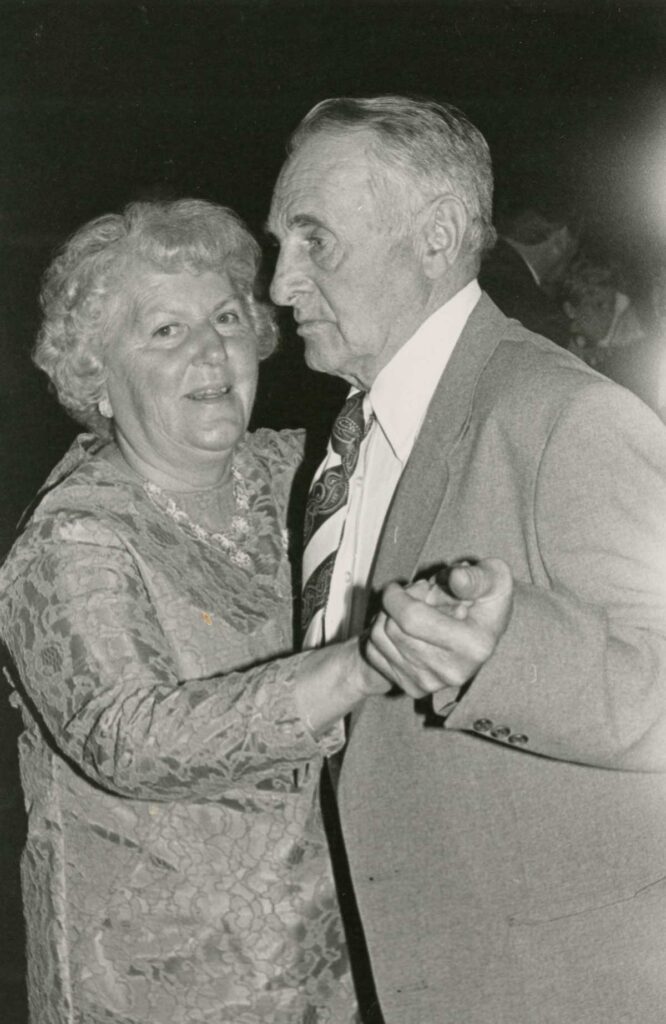In 1946 Otto Carpenter and Bob Burns opened Snow Park, Park City’s first alpine ski area. In 1963, when Treasure Mountains (now Park City Mountain) burst onto the scene, Carpenter embraced the competition. “It’s going to help the skiing industry for all of us,” he told The Park Record that year.
So, in the fall of 1985, when I questioned Otto Carpenter about the impending opening of the new Town Lift a few blocks from his home, I expected his eyes to light up.
My mistake.
“To me it’s the biggest goof that Park City ever pulled off,” he growled. “What good is it going to do? Where’s the parking going to be? It’s the most unintelligent thing I’ve ever seen. And it’s not going to help Main Street.”
Otto Carpenter was never shy about expressing his opinions.
Born in Kamas, Utah, in 1904, Otto moved to Park City in the early 1930s, hoping to earn enough money to pay his way through college. As it turned out, his higher education came in the shafts and tunnels of the local mines. “I never got a college degree and as far as I know I never missed anything,” he told me.
In 1935, during a visit to Salt Lake City, Otto met young LaRue Hunter. They were married in 1940.
“I told my wife, ‘I’m not going to move you into one of those old [miners’] shacks. I’m going to build you a house.’”

Credit: Park City Historical Society & Museum, Park Record Collection
It was a gallant gesture. But he didn’t get much encouragement from the local bank manager. “He said, ‘I don’t recommend you build a home in Park City because it’s never going to amount to anything,’” Otto recalled.
He went ahead anyway. He managed to buy a piece of property on Norfolk Avenue – once occupied by the Lincoln School – and designed a five-room frame home. In the spring of 1941, according to The Park Record, he applied for the “first permit for building a new home [in Park City] in some time.”
For the wood, he and his brother-in-law went into the mountains to cut down their own trees. A local sawmill turned the logs into finished lumber. Then Otto built the house, demonstrating that the family name was more than just a label.
Otto loved the outdoors. He was an avid hunter and fisherman, but his true passion was skiing. He was one of the first ski jumpers at Ecker Hill in what is now Pinebrook.
Chances are you’ve already heard the story of Snow Park: how Otto and his good friend Bob Burns built a mom-and-pop ski area on the lower slopes of what is now Deer Valley, starting with an old bull wheel scrounged from the mines.
“We built the lift towers from the timber that was on the hill,” he said. “We built the wheels for the cables to run over.” The power for one of the lifts came from an old Ford Model A engine.
The base lodge was a crude lunchroom heated with a wood stove. But LaRue’s cooking drew rave reviews. “[The] Carpenter food counter serves what may be the largest, most succulent two-bit hamburger in the West,” a New York Times reporter once drooled. Otto and LaRue’s six children were among a generation of local kids who learned to ski at Snow Park.
“Otto was a friend to several young kids,” said renowned sculptor Ed Fraughton, who worked at Snow Park while growing up in Park City. “I almost felt like part of his family.”
Otto insisted that the opening of Treasure Mountains “didn’t hurt me at all.” However, he was forced to close Snow Park in 1969, he said, after United Park City Mines, the owner of the underlying land, refused to renew his lease.
But Otto didn’t just ride off into the sunset. Far from it. Look for the rest of this Otto biography next week.
The Park City Museum’s next lecture, given by Matt Melville, is on April 17 from 5 to 6 p.m. and covers early prominent Parkite Henry Shields. It will take place at the Museum’s Education and Collections Center at 2079 Sidewinder Drive.